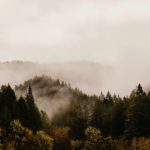
This podcast, which runs about 14 minutes, contains the following blog post (more or less) with some additional comments:
Wild, Wild Country, a 6-part documentary, directed by the Way brothers and produced by indie film director Mark Duplass, is about the Bhagwan Shree Rajneesh cult that was established in Oregon in the 1980s. I was interested in watching this as I read several of his books and knew people who were followers (though no one who actually lived on the commune). Before I started watching, I didn’t even realize it was a doc; I assumed for some reason that it was a dramatization. The doc turned out to be more interesting, mainly because several of the principle players were interviews.
Rajneesh, who later become known as Osho, died quite a few years ago so all we have are clips of him speaking. Osho was known mainly for his advocacy of open sexuality and for his blatant materialism, expressed among other things by his large collection of Rolls Royces. But was he materialistic or mocking materialism with his excessive wealth? This is one of the many questions that are hard to answer. It’s worth noting that Osho has been called a trickster guru along the lines of other controversial spiritual leaders such as George Gurdjieff, whose name comes up briefly here as well.
Strangely, Osho is really a background character in this documentary. Most of the focus is on his secretary, Ma Anand Sheela, who turns out to be the character who really makes the whole movie fascinating. Sheela is a notorious figure who was accused of several criminal acts, including the poisoning of the entire town of Antelope, Oregon and attempted murders of rivals within the group. There are a couple of other higher-ups who were living in Rajneeshpuram who give extensive interviews as well.
In many instances, Sheela comes across like a textbook psychopath -charismatic, without remorse, and a natural leader. Her obvious love of the camera and willingness to talk at length are what really make Wild, Wild Country so interesting to watch. Those looking for a more in-depth exploration of Rajneesh/Osho’s philosophy would do better reading some of his books.
A couple of other figures are also prominent in the doc. Swami Prem Niren (like many in the group, he’s an American who took on a Sannyasin name), the group’s attorney for many years. He is clearly conflicted about many events and is brought to tears several times at memories of better days in the movement. Another is Catherine Jane Stork, an Australian woman who joined the movement and spent time in prison along with Sheela for attempted murder. Stork is the only interviewee who seems to have truly repented and left the movement behind.
Considering that it’s a documentary about a religious movement that’s generally labeled a cult, Wild, Wild Country is about as balanced as you could expect. The shocking events, which are well documented, are shown alongside the fond recollections of former members who still find much of value in their years under Rajneesh.
As much as anything else, this film is about sociology and culture; about what happens when you have two radically opposed subcultures living alongside each other. Rajneesh, and really Sheela, chose a remote rural community of Antelope Valley, Oregon, whose citizens were mostly elderly, insular and very conservative. You couldn’t possibly have more of a mismatch between a group following a Tantric Indian guru and a disapproving community of conservative Christians, many of whom probably disapprove of much of modern mainstream culture much less free love, polygamy, and anarchy (one of the recurring themes in Osho’s discourses is to distrust all traditional authority).
How you react to this film will, of course, depend on your own background and biases. Even if you see merit in Osho’s teaching, however, it seems clear that Sheela was a ruthless and power-hungry character. This also brings up some interesting issues about the nature of power and radical movements in general. Arguably, it’s people with those characteristics who are most likely to seize power in any institution. It’s just more noticeable in a cult because it’s operating outside the norms of society. We don’t notice the pathology of mainstream authority because it’s right in front of us.
Apart from the excesses and corruption within the group/cult, there’s little doubt that the locals in Oregon, and later higher up faction within the U.S. government, were determined to oust the Rajneeshees one way or another. When Sheela and others refer to themselves as an oppressed religious community, they have a point. At the same point, it’s instructive to note how quickly the leadership within the group sank to the same level, or even lower in some cases, as its opponents.
The story of Rajneesh and Rajneeshpuram is very complex, involves many people, some no longer living (most notably, the guru himself). This documentary is certainly not the whole story. Another of Osho’s disciples, who doesn’t appear in the doc, wrote her own book that tells, believe it or not, a far more damning picture of both Osho and Sheela. In a recent article, Satya Franklin claims that Sheela, true to style, manipulated the filmmakers into giving her control over the project. Somehow, I find this fairly easy to believe.
https://www.thedailybeast.com/wild-wild-country-a-rajneeshee-cult-insider-on-the-horrors-the-netflix-series-left-out
“Take hold of your own life. See that the whole existence is celebrating. These trees are not serious, these birds are not serious. The rivers and the oceans are wild, and everywhere there is fun, everywhere there is joy and delight. Watch existence, listen to the existence and become part of it.”
– OSHO
Speaking of cults, ever wonder if all of society is really a cult? I explore this and other possibilities in my book, a collection of essays called Beyond The Cultoid, available on Kindle and as an audiobook on Audible.
